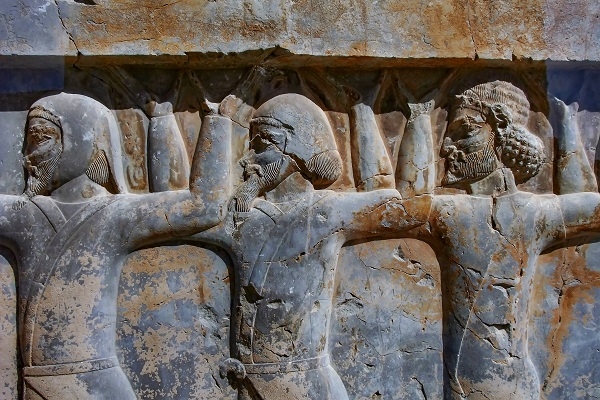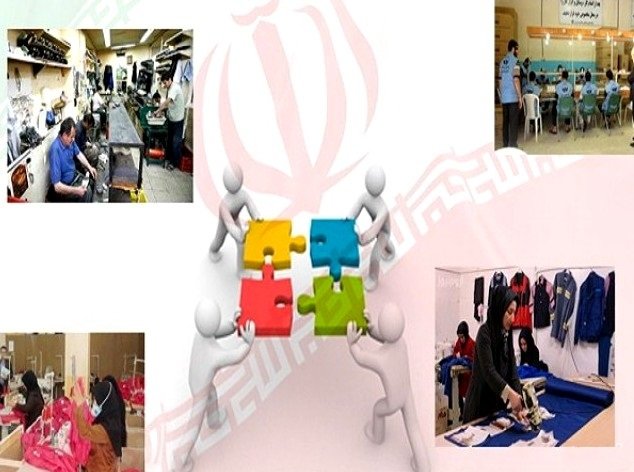
Traditional Cooperatives in Iran
In ancient Iran, there were groups of well-off
benevolent people who used to venture in development activities such as
construction of roads, bridges, caravanserais, mosques, water reservoirs,
buildings, and other public facilities; ordinary working class citizens also
contributed their shares by power of their arms and through cooperation if they
did not have sufficient capital or liquidity. A concrete example of cooperation
could be traced among rural dwellers of the country, a commendable practice
inherited from old times and still prevailing among Iranian farmers.
Like many other rural communities all over the
world, Iranian farmers helped one another and participated in group activities
including cultivation, weeding, irrigation and harvest. Such cooperation was a
collective cultivation while preserving rights of ownership and individual
profit from agricultural land. Villagers still practice this type of
cooperation that seems to be more natural than working in the form of
agricultural cooperatives.
These traditional cooperatives are considered
a high-profile partnership in human community as well as in Iranian society,
though it is called differently among different cultures. Some old-fashioned
cooperatives were named Boneh or Haraseh, Wareh and so on.
Within the past couple of years, social and
economic developments in the fabric of rural community, particularly by
introducing agricultural machineries, extension of deep and semi-deep water
wells, and using engine pump has diminished traditional group work or changed
its framework, which resulted in creation of new form of cooperation and
partnership in purchase, maintenance and sharing agricultural machineries.
Iranian Formal Cooperatives in
Pre-Revolution Era
Started since nineteen century, formal
cooperatives are deep rooted in capitalist and socialist countries. However,
this is a rather modern phenomenon in Iran, in fact only some decades old, if
disregarding its records in conventional type of cooperatives. The launch of
formal cooperatives in Iran dates back to inclusion of some articles in the Iranian
commercial code of 1924. These articles dealt with producer and consumer
cooperatives. In 1935, cooperatives initiated their formal activity in terms of
corporation and registration and a rural cooperative society was established in
Davoud-Abad of Garmsar City by the government. The basis for establishment of
the mentioned cooperative was the Iranian commercial code of 1932.
After the 1979 Revolution of Iran, in principle 44 and 43 of the country's Constitution, cooperatives have been recognized as one of the three main pillars of the Iranian economy.
Article 44 of the Constitution of the Islamic Republic of Iran states that “the economic system of the Islamic Republic of Iran shall be based on government, cooperative and private sectors, with proper and sound planning”.
Also, Article 43 of the Constitution describes
the functions of cooperatives as follows:
“Ensuring conditions and opportunities of employment for everyone, with a view to attaining full employment; placing the means of work at the disposal of everyone who is able to work but lacks the means, in the form of cooperatives, through granting interest-free loans or recourse to any other legitimate means that neither results in the concentration or circulation of wealth in the hands of a few individuals or groups, nor turns the government into a major absolute employer. These steps must be taken with due regard for the requirements governing the general economic planning of the country at each stage of its growth”.

The development of Iran's cooperative sector over time is as follows:
|
Year
|
Title
|
|
1925
|
First legislation around
cooperative societies in the Iranian commercial code
|
|
1946
|
Establishment of a Cooperative Agricultural Fund
|
|
1952
|
Approving
the Statutes of the Bank for Development and Rural Cooperatives
|
|
1955
|
Approval of
the law of cooperative companies in the parliament and the approval of the
rules of formation of the Supreme Council of Cooperatives in the supervisory
board, the formation of a consumer
cooperative for the use of the armed
forces
|
|
1963
|
Approving the Statute of the
Central Organization for Rural Cooperatives
|
|
1967
|
Announcing this year in Iranian Calendar as "Year of Cooperatives" - Formation of Ministry of Rural and Cooperative Reforms and Establishment of Central Cooperative Organization
|
|
1968
|
Amendments to the Statute of the
Central Organization of Rural Cooperatives in accordance with the Programs of
the Ministry of Rural Reforms and Rural Cooperatives - Establishment of Iran
Agricultural Development Bank
|
|
1971
|
Establishment of the Ministry of Cooperatives and Rural
Affairs instead of the Ministry of Land Reform and Rural Cooperatives,
Establishment the Organization for the Promotion and Development of
Non-Agricultural Activities under the Ministry of Cooperatives
|
|
1973
|
Establishment of City and Village
consumer Cooperative Organization
|
|
1977
|
The
dissolution of the Ministry of Cooperatives and Rural Affairs, renaming the
Ministry of Agriculture and Natural Resources to the Ministry of Agriculture
and Rural Development, transfer most of organizations and institutions under
the supervision of the Ministry of Cooperatives and Rural Affairs to the
Ministry of Agriculture and Rural Development and annexation
Co-operative of City and Village Consumers and Central Organization of
Cooperatives of the Country to the Ministry of Commerce
|
|
1979
|
Approval of the Statutes of
Central Organization for Rural Cooperatives of Iran
|
|
1989
|
Establishment of a cooperative fund under the supervision of the Ministry
of the Interior, approval of statutes
of the Central Organization of Mining Cooperatives
|
|
1990
|
Transfer of Cooperative Fund to
Ministry of Labor
|
|
1991
|
Approval of Law of the
Cooperative sector of the Islamic Republic of Iran economy, exemption central
rural cooperative organization from the scope of this law.
|
|
1991
|
Establishment of the Ministry of
Cooperatives
|
|
1994
|
Establishment of Iran Chamber of Cooperatives
(ICC)
|
|
1998
|
Amendment of the Law of the Cooperative sector of the Islamic Republic of
Iran
|
|
2002
|
Approval of the consolidated document of the cooperative sector
|
|
2005
|
Communication of general policies of 44th principle of country’s Constitution from Supreme Leader of Islamic Republic of Iran
|
|
2007
|
Approval law on implementation of
General Policies of Principle(44)
|
|
2007
|
Establishment of Tose'e Ta'avon Bank
|
|
2008
|
Establishment of Cooperative
Investment Guarantee Fund
|
|
2009
|
Establishment of first Insurance
Cooperative in Iran
|
|
2011
|
Approval of the Law on
Integration of the Ministry of Cooperatives, Labor and Social Welfare and the
Integration of the Ministry of Cooperatives with the Ministries of Labor,
Welfare and Social Security
|
|
2011
|
Adopt the Law on Continuous
Improvement of the Business Environment and giving national chambers the
central role
|
|
2013
|
Approval of the cooperative
sector development document
|
|
2014
|
Approval of the law on amending the law of the cooperative sector of the Islamic Republic's economy
|
|
2014
|
Modification of the Statutes of
Iran Chamber of Cooperatives
|